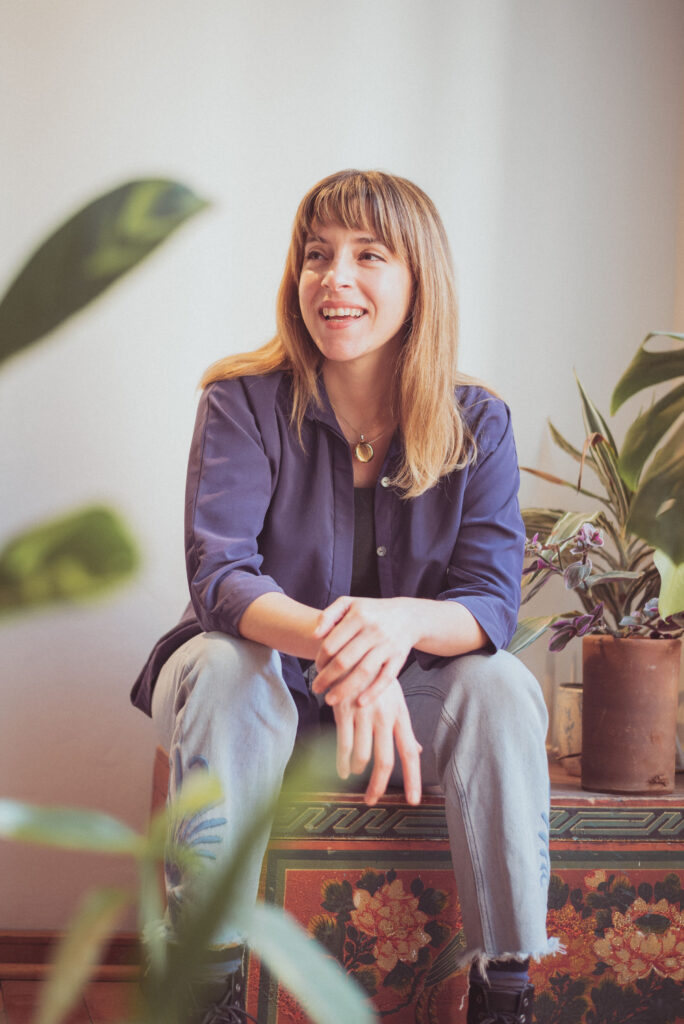


We’re switching it up today on the blog with questions
for two incredible #kidlit illustrators:

Gabriela Lyon lives in Santiago de Chile.
Gabriela Lyon is the illustrator of 9 KILOMETERS written by Claudio Aguilera / translated by Lawrence Schimel ( Eerdmans Books for Young Readers). The English edition releases next week–February 28th. Other books include A SMALL HISTORY OF A DISAGREEMENT by Claudio Fuentes (Greystone Kids). Lyon studied visual arts at the Finis Terrae University in Santiago, Chile, where she now teaches drawing classes.

Luisa Uribe is the illustrator of DEAR EARTH…From Your Friends in Room 5, written by Erin Dealey (Harper Collins). The softcover edition releases TODAY–February 21st. Other books include ARELI IS A DREAMER: A True Story by Areli Morales, a DACA Recipient (Random House Studio). Uribe graduated as a Graphic Designer from the National University of Colombia and has an MA in Art and Design from Loughborough University. In 2018 she was awarded the SOI Dilys Evans Founder’s Award for THE VAST WONDER OF THE WORLD by Mélina Mangal (Lerner Books).

Let’s ask some questions!
Q 1. What happens when you first begin to illustrate a picture book like 9 KILOMETERS (Gabriela) or DEAR EARTH… (Luisa)?
Gabriela Lyon: Before quarantine, I was lucky enough to visit southern Chile where 9 KILOMETERS takes place. That trip was essential to be able to observe the light and the colors of the place that I wanted to capture.

I took care to create a perfect storyboard, one that efficiently unites both text and illustration so that there would be harmony in terms of visual and textual content. With acrylic on 31×70 cm. paper, I was able to delve into each illustration. I wanted nothing to be left over.
I started the first illustration of 9 KILOMETERS in April 2020. Personally, illustrating a book like this with so much landscape provided a wonderful escape during the pandemic.

Luisa Uribe: I read and reread the text so I can have a good grasp of the story and context, and I’ll start thinking about what decisions I want to make in terms of setting and characters. For DEAR EARTH I knew I wanted a bright and diverse group of kids so I focused on designing visually interesting characters. After that I thought it would be a powerful contrast to have the classroom on one side and these wild places that represent the Earth on the other.
Research
Q. 2 How much research was involved in illustrating these books?
Gabriela Lyon: 9 KILOMETERS takes place in the mountains and rain forests of Chile. I had to study the flora and fauna of the area, which is very particular and beautiful. There is a tree that I tried to capture in each scene, which is the Chilean Canelo (Drimys winteri), a sacred tree for the Mapuche culture. It has medicinal properties, and its flower is shaped like an 8-pointed star.


GL: In addition, making this picture book was the main topic for my master’s degree, which focused on the creation of a picture book. Therefore I also studied a lot about the history of the picture book, how it is structured and what makes it what it is.

Luisa Uribe: I was careful in researching the places and species I wanted to show. I wanted to have different biomes represented in the spreads where Earth is answering through its habitants. Take for example, the black-footed ferret which was thought to be extinct, but was found and reintroduced, and the prairies it lives in of which there is so little left.
Any Favorites?
Q 3. What is your favorite spread?

Gabriela Lyon: In 9 KILOMETERS, my favorite part is when the text says that there are things that cannot be counted with numbers, and the illustration shows a boy looking at the raindrops. I feel that it’s a powerful and poetic scene.

Luisa Uribe: The September letter spread with all the kids gardening and composting, is a good representation of the spirit of the book, and I had a lot of fun working on it.
ED chiming in here with my favorite spread from our book, DEAR EARTH...:

ED: I love the perspective of the illustration above. Readers focus on the beautiful turtle and many don’t notice the plastic bag in the middle of the fish at first. It shows us first hand how turtles might mistake plastic for dinner!
Q 4. Were there any surprises or difficulties you encountered while working on this project?
Gabriela Lyon: I think that the biggest difficulty was to create a consistent storyboard that efficiently unites both text and illustration so that there was harmony in terms of visual and textual content, I wanted nothing to be left over.
Environmental awareness
Q 5. I have read that there are several organizations dedicated to protecting Chile’s Natural and Cultural heritage, and that Colombia is the second-greatest biodiverse country in the world. Can you share a few earth-friendly habits of the children of your countries, or ways their teachers and families encourage #environmental awareness?
Gabriela Lyon: In Chile, there are a lot of infographic-illustrated books for children that help promote care for the environment. For example. a book I llustrated, Yo, sustainable (La Bonita Ediciones) tells the story of a Chilean girl who is an environmental leader like Greta Thunberg.
I always try to add flora and fauna to the books that I illustrate. Whatever the story is, I want to capture the beauty, generosity, and at the same time, vulnerability of our nature.
Luisa Uribe: In Colombia we are lucky to have a system of protected natural parks called Parques Nacionales Naturales de Colombia, which is part of the Ministry of Environment and Sustainable Development. They focus on conservation and ecotourism.
We also have a group of young activists called Guardianes Por La Vida, who work to educate kids around the country on climate change and sustainable ways of living, and they fight really hard to make their voices heard on a global scale as well in the spirit of Greta Thunberg.
In the Beginning…
Q. 6 As a young child, did you always want to be an illustrator?
Gabriela Lyon: I was about 7 years old when my mother bought a picture book from the illustrator Tatjana Hauptmann, a compilation of children’s classic stories. The illustrations were beautiful, and I felt an enormous desire to be able to draw like that woman.
So yes, I always wanted to be an illustrator, although in my country it was very difficult to become one, there were not many publishers that accepted work from national illustrators, and there were no schools that taught that either. Now in 2023 it is different. Being an illustrator has become very popular.
Luisa Uribe: I didn’t know what an illustrator was when I was little, I just really loved to draw and read, and books were my treasure and solace when I was growing up. I just kept drawing and eventually illustration became the one and only path to take.

Draw, draw, draw. Read, read, read.
Q 7. Are there any tips you might share for artists who hope to illustrate children’s books?
Gabriela Lyon: There are no good and bad books, there are no good and bad images or illustrations. At first, you must see and read everything without prejudice. Try to learn all you can first, and then you can chose what works for you. You must draw everything you can. Ddraw, draw, draw.
Luisa Uribe: The one tip that comes to mind right now is to be aware of trends and read lots of picture books, both new and old. If you know the trends and what is being published right now you can figure out what kind of stories you’d like to work on, and it’s easier to build a portfolio around that.
¡Muchas gracias!
Thank you to Gabriela Lyon and Luisa Uribe for joining us on the blog today.
To learn more about their work, check out their web sites:
Gabriela Lyon: www.gabrielalyon.cl
Luisa Uribe: The Bright Agency
And follow them on social media:
Twitter: lupencita
Comments Off on Happy #GreenPB2023 #BookBirthdays x 2 = Qs with #kidlit Illustrators Gabriela Lyon (9 Kilometers) + Luisa Uribe (Dear Earth…From Your Friends in Room 5)
No comments on this post yet.